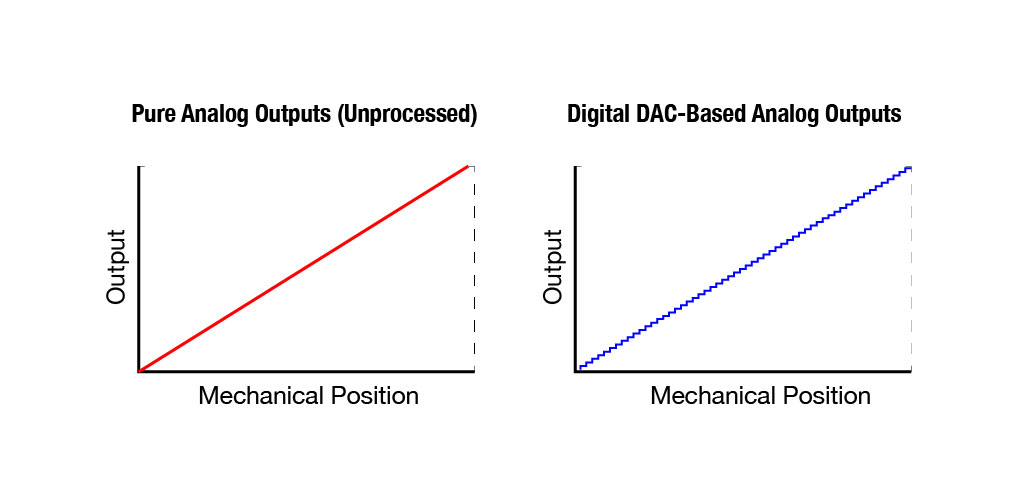Not all analog outputs are created equal. Some sensors provide a true, continuous analog signal generated entirely through analog circuitry, while others use a DAC (digital-to-analog converter) to generate an analog signal. The difference comes down to resolution and how finely the signal can represent changes in the measured parameter.
Pure Analog Outputs (Unprocessed)
- These signals are generated directly by analog circuitry—no digital processing involved.
- The output changes smoothly and continuously with the measured value.
- In theory, the resolution is infinite. In practice, it’s limited only by factors such as:
- Analog tolerances of the sensor components
- Electrical noise in the wiring/system
- Stability of the electronics
- Precision of the equipment reading the signal (DAQ, ECU, etc.)
Example:
A 4–20 mA output generated through a purely analog circuit can represent infinitely small changes, as long as the receiving device is precise enough to detect them.
Key Advantage: You get the fastest, smoothest possible response with no “steps” in the signal.
Digital DAC-Based Analog Outputs
- Some sensors use a microcontroller or ASIC with a built-in DAC to generate the analog output.
- Here, the resolution is limited by the bit depth of the DAC.
- The analog signal is still continuous to the end device, but behind the scenes it is created in discrete steps.
Examples:
- A 12-bit DAC over a 16 mA span (4–20 mA) = ~3.9 µA per step
- A 14-bit DAC over a 16 mA span (4–20 mA) = ~1.0 µA per step
- For voltage outputs (e.g., 0–5 V), the same principle applies—the step size is determined by the DAC’s bit depth.
Key Advantage: DAC-based outputs allow for more flexible signal scaling, diagnostics, and programmability, but their resolution is defined and finite.
Key Takeaway
- Pure Analog Output = Continuous signal, “infinite” resolution in theory, limited only by noise and system precision.
- DAC-Based Analog Output = Step-defined resolution based on DAC bit depth, but often with additional flexibility and processing options.

Both approaches have advantages. Pure analog offers the smoothest response possible, while DAC-based outputs provide precise, repeatable resolution and often more versatility.
